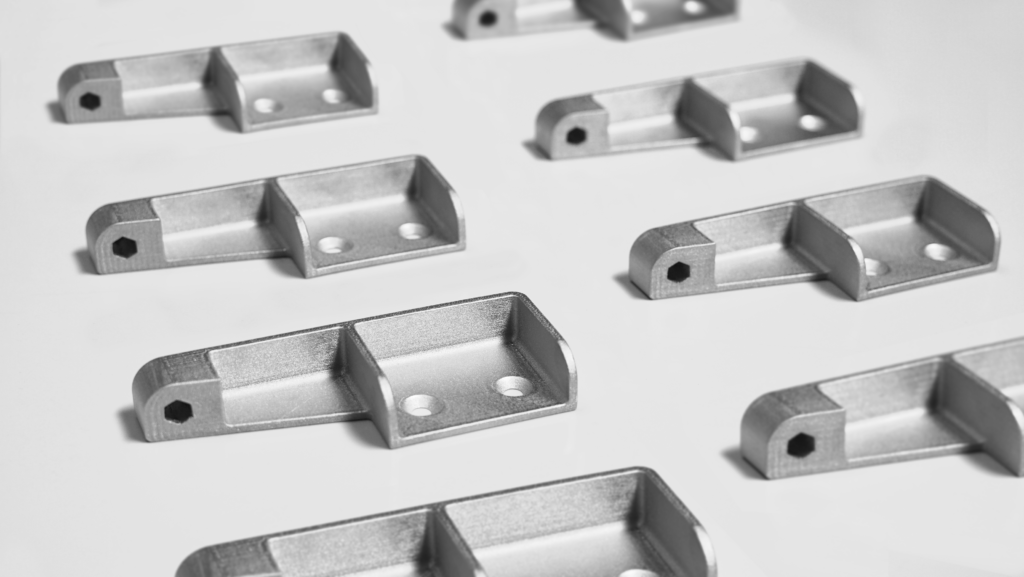Replique, a BASF venture builder company, wants to make it possible for industrial firms, such as Alstom and Miele, to 3D print spare parts the world over. All the while, some of these orders will make use of BASF’s own 3D printing service Sculpteo and with BASF’s own polymer materials and bound metal material. This is a great move by BASF since it can now ¨own the customer¨ and build profitable relationships off of years of supplying large companies with polymers and chemicals. This allows the world’s largest chemical company to manage energy streams and materials in a new way while making use of its existing infrastructure.
To give clients more control and make them trust the endeavor more, Replique has launched RSure, a software solution to keep track of parts as they are manufactured. RSure also allows firms to digitally inspect components, and set quality norms and specifications. The software tool manages quality checks for Replique’s service partners who manufacture items on behalf of clients. Images, measurements and other checks can be uploaded to the platform during and after production, which can be viewed by the client before they ship. The offering is accompanied by a digital warehouse module as well. Formnext visitors will be able to take Replique’s software platform for a spin through ordering a sample part.
Replique CEO Max Siebert says,
“As part of BASF, we know that industrial companies need standardized and repeatable production processes, especially when it comes to decentralized manufacturing. With our end-to-end solution we can ensure traceability, while providing repeatable quality and secure encryption of 3D printed parts.”
This kind of a solution is sure to give large industrial companies more confidence in the service. Quality is one of the biggest issues with 3D printed products, after all.
This is a really smart play by BASF. 3D printing spare parts can really save companies billions of dollars. Often spares are made years in advance, tying up capital for a decade or more. Or molds have to be kept in storage and additional components have to be made in extended runs periodically. By allowing software to manage inventories with a digital warehouse, firms can analyze, learn and come to grips with spare part costing. They can then also make 3D printed spares available when needed.
 Four Miele accessories are produced so far using Replique’s platform: A coffee clip in two sizes, a borehole cleaner, and a valuable separator (Source: Miele).
Four Miele accessories are produced so far using Replique’s platform: A coffee clip in two sizes, a borehole cleaner, and a valuable separator (Source: Miele).Not all spares are suited for 3D printing. Many will not be cost effective. Additive manufacturing (AM) is very unlikely to displace stamping or lathe work. However, for out-of-production parts we could save people weeks in down time or service interruptions. AM could also be much more cost effective in many cases. Many inventories could be made digital, which leading to significant optimization and rationalization in spare parts.
To me, 3D printing is a lever that the AM industry can use in order to enter into strategic relationships with large firms to deal with their spares. The technology can save them significant capital and do this with little work on their part. We don’t have to 3D print all of their spares. But, if we can save money on their entire inventory that this will quickly add up to significant savings. Businesses can be more efficient with better cashflow by understanding spare parts better and using their money when they absolutely need to. This will allow large companies to reap rewards in many areas. AM firms could manage energy flows, ensure efficient recycling and optimize supply chains. The overall opportunity is one of many billions and we could use 3D printing in order to be the partners that manage dead inventory and turn it into cash. To me that is the opportunity that Replique together with companies such as DBSchenker and DiManEx are addressing.
Subscribe to Our Email Newsletter
Stay up-to-date on all the latest news from the 3D printing industry and receive information and offers from third party vendors.
You May Also Like
3D Printing News Briefs, April 13, 2024: Robotics, Orthotics, & Hypersonics
In 3D Printing News Briefs today, we’re focusing first on robotics, as Carnegie Mellon University’s new Robotics Innovation Center will house several community outreach programs, and Ugogo3D is now working...
Rail Giant Alstom Saves $15M with 3D Printing Automation Software 3D Spark
3D Spark has entered into a three-year deal with the rail giant Alstom. Alstom, a transport behemoth with annual revenues of $16 billion, specializes in the manufacture of trains, trams,...
Meltio Expands Global Reach with New Partnerships in the Americas and Europe
Spanish 3D printing manufacturer Meltio has expanded its sales network across the globe. With the addition of three new partners in the United States, Brazil, Argentina, and Italy, Meltio aims...
3D Printing Webinar and Event Roundup: April 7, 2024
Webinars and events in the 3D printing industry are picking back up this week! Sea-Air-Space is coming to Maryland, and SAE International is sponsoring a 3D Systems webinar about 3D...
































